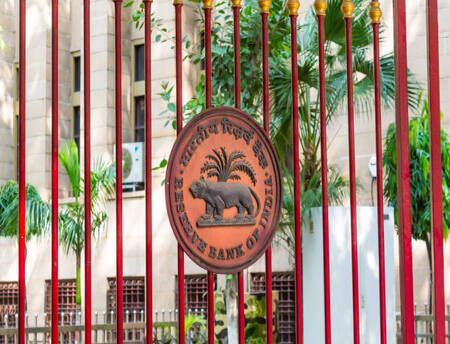With the robust growth of retail payments in India, the Reserve Bank of India (“RBI”) in an attempt to challenge the dominance and monopoly of National Payments Corporation of India (“NPCI”) and to encourage growth and innovation in the payments ecosystem, published the Framework for authorisation of pan-India Umbrella Entity for Retail Payments (“Framework”) on 18th August 2020. The RBI had first discussed its concerns regarding concentration risks due to the presence of a single umbrella entity in its Policy Paper on ‘Authorisation of New Retail Payment Systems’ published on January 21, 2019. Proving the RBI’s speculation, the rapid growth of retail payments in the country coupled with NPCI’s vast catalogue of products such as Immediate Payment Service (“IMPS”) and Unified Payments Interface (“UPI”) allowed NPCI to process over 60 per cent of the retail payments by volume in October 2019. Subsequently, the RBI proposed the creation of an alternative association of market players for better coordination and resource-pooling otherwise termed as an Umbrella Entity (“UE”) for the retail payments ecosystem, in its 20th Issue of the Financial Stability Report published on December 27, 2019.The Framework allows the proposed UE to be either an entity registered under Section 8 of the Companies Act, 2013 or a profit making organisation which shall be authorised by the RBI under Section 4 of the Payment and Settlement Systems Act, 2007 (“PSS Act”) to act as a pan-India UE for retail payments. The article traces the rationale behind the introduction of an alternative UE to the existing NPCI monopoly in the retail payment ecosystem. Further, the terminology and context of the Framework are examined to recognise the potential benefits and lacuna of this much anticipated development in the retail payment space.
Rationale and benefits
The apparent benefits of introducing another pan-India UE, as envisaged in the Framework, focussing on retail payment systems are multi-fold. The first, and perhaps the most apparent intent is to bring in competition from non-banking players in a market which presently has a sole player backed by only banking entities. As evidenced from the framework’s requirement of three years’ experience in the payments ecosystem as Payment System Operator (“PSO”), Payment Service Provider or Technology Service Provider (“TSP”), the proposed UE finally allows the involvement of non-banking players. This comes as an welcome change because the current retail payment ecosystem, although having major private e-wallet stakeholders like Paytm and PhonePe, does not provide for representation to such entities in the existing NPCI framework. NPCI presently has ten promoter banks, and in 2016, the shareholding was broadened to incorporate 56 banks in total, across sectors. Thus, with the introduction of such non-banking entities in the proposed UE, the non-banking entities may introduce their indigenous system for payments over NPCI products, with MobiKwik already showing interest, along with PSOs and TSPs like Billdesk and RazorPay.
Additionally, it is expected that introducing more UEs can address the risks relating to concentration, which would, in turn, contribute to the country’s financial stability. Further, the framework allows non-banking entities to operate in clearing and settlement systems with no minimum requirement of capital from Public Sector Banks – a stark departure from the obligation posed by Section 4(2) of the PSS Act. Furthermore, it is believed that with NPCI handling UPI, IMPS, Aadhar Enabled Payment System, Bharat Bill Payment System, RuPay, FASTag amongst other channels for payment at present, the entry of competing entity(s) will invigorate newer innovations and maintenance of the higher quality of services. The idea is to primarily ensure checks and balances to prevent monopoly and the avoidance of the risk of a single point of failure in the payment ecosystem, where the NPCI could be affected by operational downfall, thus avoiding inefficiencies and security risks in the future.
Present concerns and potential bottle-necks
The Framework remains mostly unaltered from the Draft Framework for authorisation of a pan-India New Umbrella Entity (‘NUE’) for Retail Payment Systems (“Draft Framework”), with one major shift being that the mandatory requirement for promoters to reduce their shareholding in the UEs to a minimum of 25 per cent has been made voluntary. This seems to be in line with the new economic realities of a world order crippled by COVID-19 with equally severe impacts on India’s economy and GDP, resulting in scarcity of capital. This also appears to be a relief when read with the unchanged requirement of maintaining a minimum net worth of INR 300 crore at all times, alongside a minimum paid-up capital requirement of INR 500 crore where individual promoters must have a minimum capital contribution of INR 50 crore – an already daunting proposition. While the purpose of having such requirements is justifiable due to the need to support inter alia technological infrastructure, business operations, and mitigating risks, this would exclude upcoming and promising players who are conducive to innovation and development in the retail payment ecosystem.
Another potential bottleneck to this initiative is the strict mandate that the promoter entities have to be owned and controlled by resident Indian citizens; thus, limiting direct participation of foreign players who may be in a better position to bring the latest innovations in fintech to India. This is also a speed-breaker for the involvement of foreign investment in a cash strapped economy, as Foreign Direct Investment (“FDI”) or Foreign Portfolio Investment (“FPI”) require mandatory compliances and authorisations under the framework of the Foreign Exchange Management Act, 1999 (“FEMA”). However, the requirement of authorisation for FDI/FPI in the Framework is in direct conflict with the Foreign Exchange Management (Non-debt Instruments) Rules, 2019 and the Consolidated FDI Policy, 2017 that allows for 100 per cent FDI under the automatic route for ‘Other Financial Services’ regulated by financial sector regulators.
The Framework also leaves specific word usages undefined – creating potential issues for interpretation and compliance. The foremost of these being in the prescribed ‘fit and proper’ criteria which toes the line for banking licences. The use of such words is open to interpretative ambiguity and allows the element of subjectivity and arbitrariness in the process left to the discretion of the RBI. Further, the disqualification on the grounds of financial unsoundness of a Director with no quantifiable prescription is inadequate and leaves much room for uncertainty with regard to the application in any potential dispute. This ambiguity is in no way complemented by the unspecified procedure to be followed by the External Advisory Committee, the Board for Regulation and Supervision of Payment and Settlement Systems, and the RBI in the process of selecting the UEs.
Finally, noteworthy is the point that alongside traditional payment systems like ATMs, White Label PoS, Aadhaar based payments, and remittance services, the Framework makes mention of ‘newer payment methods’ – surely a nudge towards introducing the latest cutting-edge innovations. However, this lays bare the question on whether unregulated systems, including Bitcoin, will now be allowed to be incorporated by potential UEs in the future, which only poses further questions on security and regulatory mechanisms.
Concluding remarks
The RBI’s attempt to invigorate the retail payment system is commendable yet retains some creases which need to be ironed out for smoothly transitioning to a multi-player system. The stated objective of this umbrella entity would be inter alia for the setting-up, management, and operation of new retail payment systems which is clearly seen in Section H of the Framework. Therefore, as the Framework does not provide for any mechanism on governing the existing payment systems, it is clear that the NPCI deservingly gets to retain control over its own products yet shall lose monopoly over the retail payment ecosystem. However, it is unclear as to how the NPCI and the UEs would co-exist. The Framework provides a nudge in the direction that the UE’s systems would have to interact and be interoperable with the systems operated by the NPCI, but lacks clarity concerning the distribution of the scope of activities.
Further, considering the language of the Framework in Section A, it does indicate that the RBI is open to introducing more than one UE. As discussed, the competition aspect is well served by the introduction of upcoming UEs. However, a multiplicity of such systems could be a logistic nightmare for the stakeholders who are only beginning to settle down with UPI and other NPCI products with their wide-spread integration. A sudden flood of multiple payment systems could be a drain on infrastructure and resulting compliances from switching to another player, but the stringent capital requirements are expected to rein in the problem and ensure limited well-governed and robust entities. However, this continues to pose a question on whether a new payment system will, at all, find any takers or wide-spread acceptance.
This article has been authored by Sushmit Mandal and Pratim Majumdar, students at National Law University, Odisha



